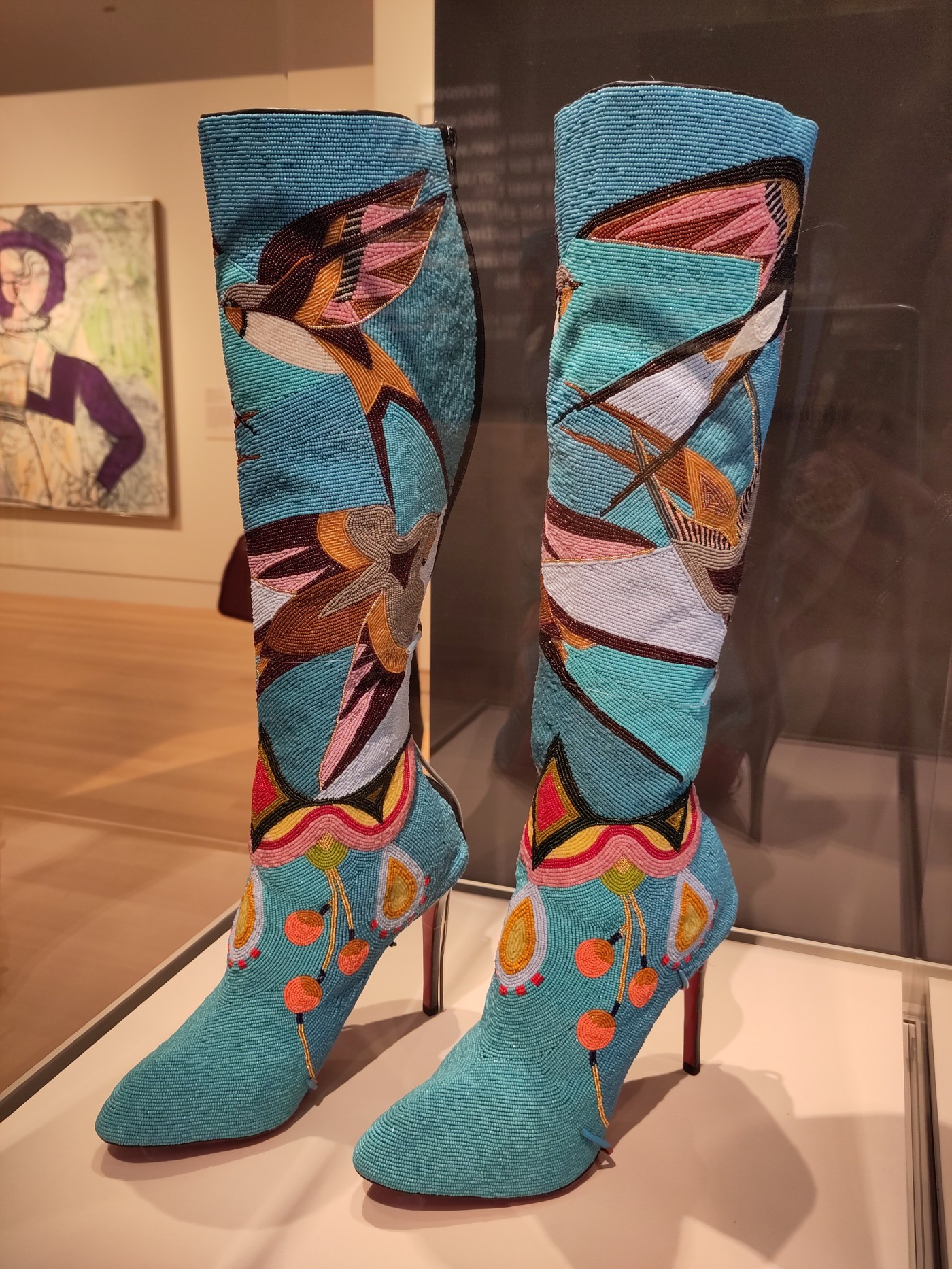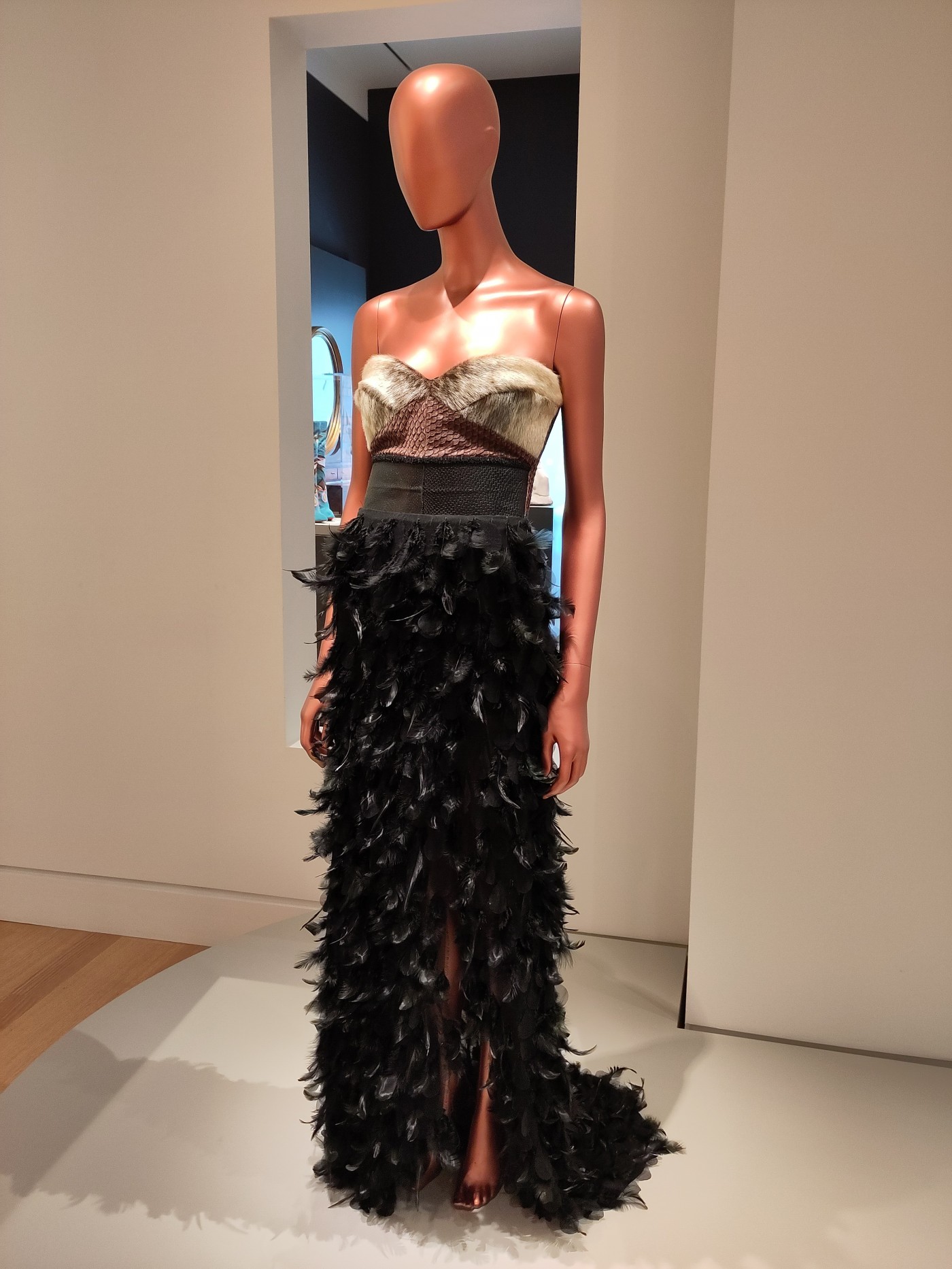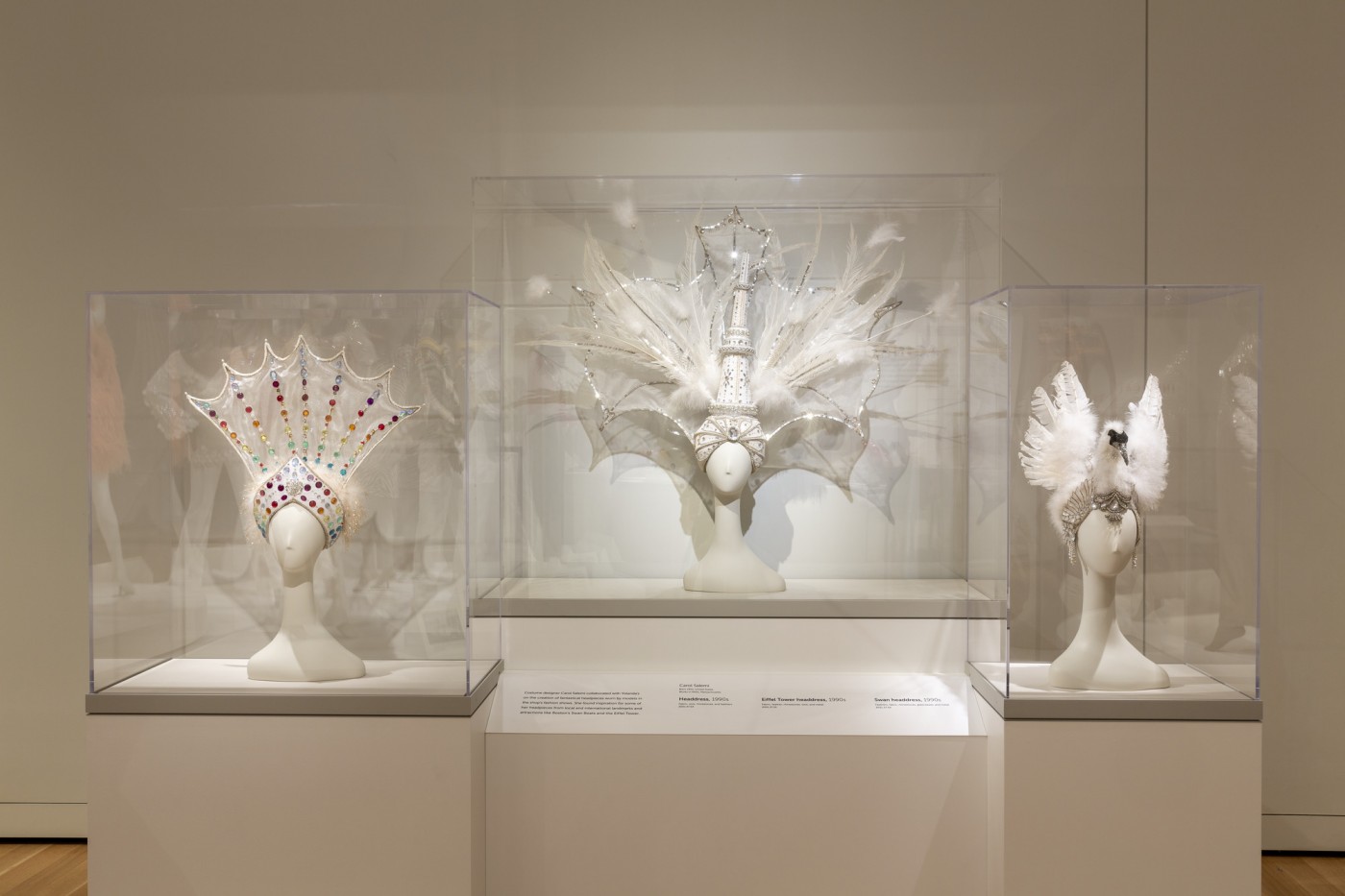- youtube
- bluesky
- Home
- About
- Costume Journal
- Membership
- Conference & Events
- Grants & Awards
- News & Social
In this week’s blog, News Editor Babette Radclyffe-Thomas reviews the Peabody Essex Museum, Salem, and its innovative approach to fashion curation.
The historic city of Salem is infamous for the witch trials which occurred there during the 17th century. So you may be surprised to discover that it is also home to a fashion museum in the oldest continuously operating and collecting museum in the United States, the Peabody Essex Museum (PEM), a gem of curatorial excellence.
The PEM has a fascinating origin story dating to the 1799 founding of the East India Marine Society of Salem, an organization of twenty-two sea captains, supercargoes and traders who were defined by having sailed beyond either the Cape of Good Hope or Cape Horn. The Society members desired to help people understand the world better, bringing a diverse collection of objects from the northwest coast of America, Asia, Africa, Oceania, India and elsewhere to Salem. Since its original founding, PEM has added on wings and extensions to its original main campus of the East India Marine Hall of 1825, and now includes thirty-five buildings, twenty-four of which are historic houses. This storied heritage runs clearly through the museum displays, which despite its long history, offers a refreshing new perspective on curation. PEM’s innovative approach is likely down to the curatorial team here led by Petra Slikard Director of Curatorial Affairs, The Nancy B. Putnam Curator of Fashion and Textiles, who gave our News Editor and Vice-Chair of Communications an exclusive tour in June 2023.
Petra Slinkard joined PEM in 2018, from a role as Curator of Costume at the Chicago History Museum, where she had worked with a collection of more than 50,000 fashion objects and textiles used in exhibitions, research, and community outreach. Petra was the co-curator of Made It: The Women who Revolutionized Fashion is organized in association with the Kunstmuseum Den Haag, and conceived and curated the exhibitions, Chicago Styled: Fashioning The Magnificent Mile®, and Making Mainbocher | The First American Couturier, for which she authored the catalogues. In addition to Petra, at PEM there are 15 members of the curatorial team and the museum even has a neuro-scientist on staff.
“Working at PEM has been wild, in the best possible way! I started in 2018, and the first project I tackled was developing and opening the inaugural Fashion and Design gallery. For anyone who works with fashion and textiles, to have a gallery dedicated to the collection is a dream come true. In the last five years (aside from COVID upheavals) we have also rotated the gallery several times, most recently to feature the work and legacy of a local fashion doyenne Yolanda Cellucci. I also curated two exhibitions: Made It | The Women Who Revolutionized Fashion (2020) and Patrick Kelly: Runway of Love (2022). Finally, during this period I was promoted to Director of Curatorial Affairs (2020). I think it is safe to say it has been wondrously eventful and continually inspiring.”
Each gallery in PEM has its own distinct personality, but a thread of inclusivity, reflection and public engagement runs through each space. Rather than sit in its own siloed space, the curatorial team presents the museum’s extensive fashion collection in a ‘Fashion and Design’ gallery alongside items from across departments. The gallery examines the act of human making, the creative process and provokes questions as to what is in our DNA compelling us to create. Petra was keen to expand upon preconceived notions of design in this gallery and drew upon the museum’s entire collections:
“It was difficult, but only because there is so much material to choose from. In order to begin selecting, we had to think first about what stories we wanted to share and how those stories and works of art supported the overarching narrative. Then, for the first iteration of the gallery, we made selections based on the quality of the work of art, the range and the representation of the entire collection. We also considered condition and conservation needs”.
There are several displays in the Fashion and Design space, each curated by theme or material rather than chronology. For example, the link between Public and Domestic, or Cultural Appropriation versus Cultural Appreciation. In a section entitled Intimidation and Empowerment, a Salem Zouave military uniform is juxtaposed with a Donna Karen military-inspired suit, which is positioned next to a Nick Cave Soundsuit textile sculpture and a sculpture in the likeness of a Japanese Samurai warrior.
Slinkard shares fascinating behind-the-scenes insights into this section: “There are always unforeseen challenges and surprises. But I enjoy that unexpected element of our work very much. In one instance, we placed a uniform on view that had been vetted by a military historian (I am not one), but that person was never able to actually visit the museum. While we were lighting, one of the contractors (a Marine) noticed the uniform and called out that the insignia were not in the proper order. It was a great and very important catch! And a wonderful reminder that talent and expertise is all around us.”
Thoughtful provocations introduce each space created in collaboration with the interpretation team: “The development of this gallery and project benefitted greatly from the influence and guidance of PEM’s talented interpretation team. Each one of the galleries in the new wing had an interpreter assigned to the project. Fashion and Design’s was Elizabeth Gardner. When the team worked through the big idea, goals, tone and approach for the installation, we knew we needed to keep it open and inviting, so we settled on a format that would engage visitors through self-reflection”.
A globally inclusive perspective is clearly at the heart of the team’s curatorial approach. For example, contemporary Chinese fashion is presented alongside Chinese Imperial wear in the Fashion and Design gallery, rather than in a China specific gallery.
The gallery showcases a wide variety of collections including notable donations. Yolanda Cellucci, an entrepreneur and local fashion icon known locally as the ‘Zsa Zsa Gabor of New England’, donated 57 outfits from her spectacular wardrobe to PEM, with 38 currently on show, including fabulous Bob Mackie pieces and a joyful USS Constitution headpiece.
The latest gallery iteration also showcases items from style icon Iris Apfel’s bequest of over 1000 pieces. This includes a selection of works from the 2009-10 Rare bird of fashion: the irreverent Iris Apfel exhibition which is then shown and is shown opposite a section on body modification. This area displays a collapsible crinoline that folded into a 6 inch diameter box anda pair of fish hook heels by Thom Solo referencing Salem’s maritime history. There is also a selection of beautiful shoes from the museum’s footwear collection which is one of the largest in the United States. The fashion and design gallery is not a linear experience, and is designed so that visitors can enter from either side of the gallery and still engage with its narratives.
Slinkard summarises her stance on her curatorial practice and professional commitment as to “engage a wide range of audiences and position the use of clothing as an effective tool for entry into museums. To situate cultural institutions as hubs for civic engagement through the display of and engagement with clothing and textiles. And to energize a transitioning generation of diverse museumgoers and emerging professionals to seek out institutions that display clothing and textiles as destinations (virtual and brick and mortar) for open and honest dialogue through inspiring and enlightening experiences.”
Fashion is just one element of this expansive museum as PEM views itself as a ‘collection of collections’. The museum’s collection has over 1.8 million works including Yin Yu Tang, the only complete Qing Dynasty house outside China. This 200-year-old Chinese house was the home of the Huang family until 1982 when it was brought to America and re-erected at PEM.
There are over a dozen exhibitions currently on show, a melange of temporary and ongoing exhibitions ranging from Gu Wenda’s monumental artwork ‘United Nations’ that recreates 188 flags of the member states of the UN out of human hair, to Anila Quayyum Agha’s striking sculptural chamber of light and shadow. There is even an art and nature center focusing on climate action.
The curatorial team clearly engages in a reckoning of the past and how collections came to be. For the first time Native American and American work is presented together and suggests discussions on being and belonging, and how identities have historically diverged and coalesced. The Asian Export Art gallery examines the role of imperialism and the opium wars. Elements such as porcelain are presented but the need to engage all, especially children in understanding why viewers should care about ancient porcelain is clearly considered using engaging animations where porcelain comes to life. The South Asian collections examine stereotypes created of South Asia during colonial India, as well as post-independence and modern contemporary Indian art.
A focus on everyday objects runs throughout the museum. For example, elements of the decorative collection appear in the Fashion and Design gallery, showing how artists stretch the imagining of ubiquitous items. Slinkard is keen to “stretch beyond the notion of objects “on display” and encourage the use of storytelling, digital engagement and insightful programming to enliven and elevate multisensory presentations.”
PEM’s refreshing curatorial approach continues with upcoming exhibitions such as Gio Swaby: Fresh Up which is curated by Lydia Peabody. Swaby is a multidisciplinary artist exploring the intersections of Blackness and womanhood, whom creates portraits of women from her own tight social circle using a range of textile-based techniques. 2026 will also mark Salem’s 400-year anniversary.
“I feel like we are just getting started! Working with my colleagues, my plan is to improve access to the collections; grow the collection with an eye for global fashion initiatives and the sharing of important, untold stories; and continue to create exhibitions and experiences that impact people of all ages.”
The Costume Society blog features more museum reviews, including Ambassador Caitlin Allen's recent review of the reopened Young V&A.
Image gallery






